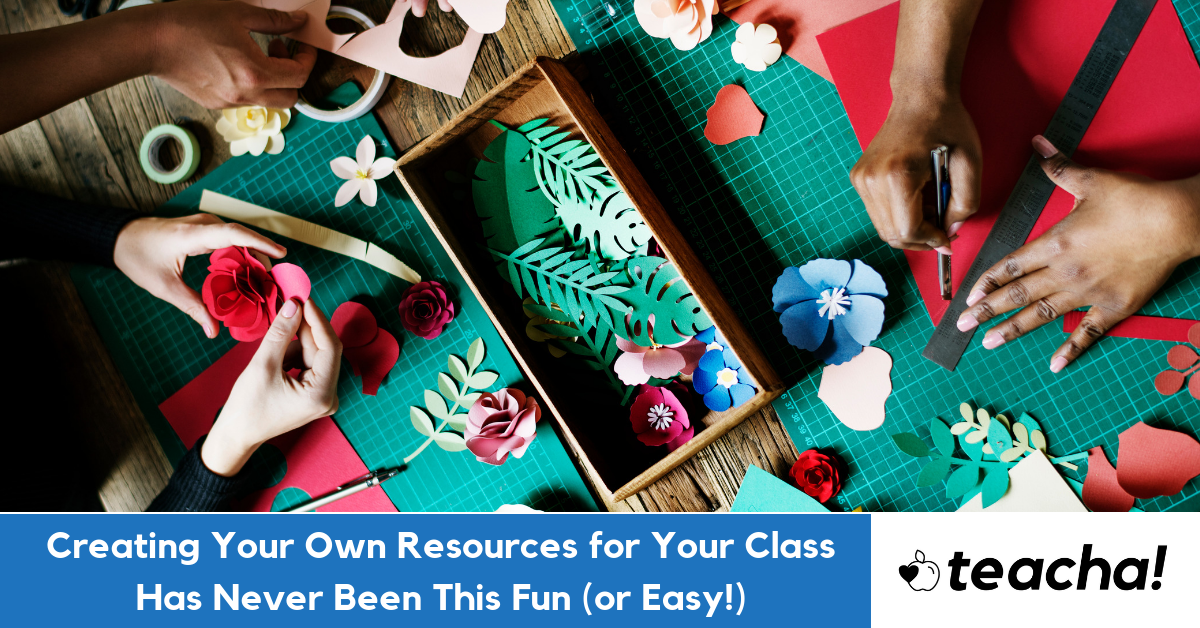Teachers often find that they never have just the right resources for their learners. Whatever they find in the stores is not precisely what a particular class needs. You will likely find that, at some point, you will have to create your own materials. But you don’t have to get overwhelmed by the task because, by carefully considering what you want your learners to know and how you plan to teach it, you can create materials that you can reuse again and again.
First, you can make resources for you classroom from materials you can easily find at a supermarket or in your home. There is no need to spend a lot of money in creating it. Keep everything simple. You don’t have to try to outdo the teacher next door who may have fancy materials in their class. For example, with note cards as the basis for flashcards or a card game that reinforces learning, you have a material that will last a long time because the paper is thick. You can also use notecards for topics for discussion, research topic ideas, or perhaps to write parts of sentences on for learners to put together as they learn proper sentence construction.
Next, work together with other teachers in your school to pool materials, ideas, and resources. You’ll then have access to new ideas to improve your classroom’s stock of resources and the materials to create them with. Set a time to meet with other teachers to create the resources you’ve planned. Making it a fun event where everyone is working on resources for their classroom can bring your team together and build camaraderie.
| [adrotate banner=”20″] |
While lamination of materials is often a fantastic way to save materials for future years’ use, you can also put materials in plastic sheet protectors. Lamination may be too expensive, depending on your particular situation. With dry erase markers, your learners can fill out multiplication worksheets in plastic sheet protectors and then erase them for someone else to use at another time. Dry erase markers and sheet protectors are an inexpensive alternative to wasting money on electricity, printer toner, and paper making copies for each learner.
Also, utilize the Internet. Many teachers around the world share their ideas and resources for free or for very inexpensive prices. You may find a resource that will work great. All you have to do is download it and use it in your classroom. This includes lesson plans in addition to tangible resources that you can either share with your learners digitally or by printing them out.
Making resources for your class has never been so simple or enjoyable!
Juffer “My Klaskamer” added the following ideas:
- Ensure that you have a roll of clear packaging tape ready to protect small flash cards or to tape name cards to desk for example.
- Should you have limited wall space and storage, consider making A4-posters to keep in a binder with your lesson plans. Try to colour code your subjects, so the workbooks and shelves coincide. That way, the learners will know exactly where their books are and where to find them. Eventually, you might even be able to write homework down in these colours to make it easier and more organised.
Macmillan Education has created a range of guides for Foundation Phase teachers to help and guide them in different areas. These guides contain easy and practical ideas that can be implemented and tried without fuss. The resource guides focus on Life Skills, Maths, Science in the Foundation Phase classroom and Physical Education.
Click here to view the brochures and extracts from the books. You can even try some of the activities!




